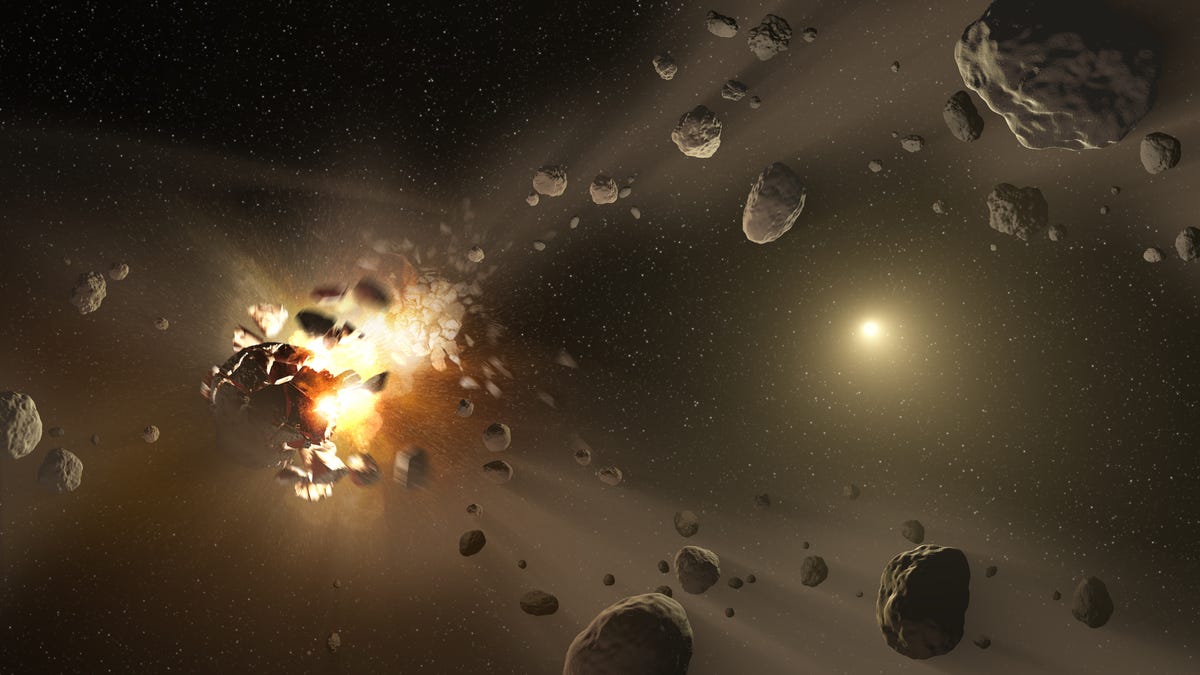Meteor that hit Earth came from beyond the solar system
Avi Loeb, the Harvard professor behind the Oumuamua alien theory, has spotted an interstellar meteor hidden in plain sight in a NASA database.

Earth may have been smacked by an interstellar object in 2014.
The man who argues interstellar object Oumuamua could have been an alien spacecraft now says a meteor that hit Earth's atmosphere in 2014 also came from elsewhere in the Milky Way, perhaps carrying life with it.
Harvard astronomer Abraham "Avi" Loeb and undergraduate student Amir Siraj have drafted a new paper identifying the second cosmic object to visit the inner solar system from beyond (Oumuamua being the first). The paper has been submitted for publication in The Astrophysical Journal Letters, but has yet to be peer reviewed.
"The reported meteor entered the solar system with a speed of 60 km/s (134,216 mph) relative to the local standard of rest (obtained by averaging the motion of all stars in the vicinity of the Sun)," Loeb wrote in an email. "Such a high ejection speed can only be produced in the innermost cores of planetary systems -- interior to the orbit of the Earth around a star like the sun, but in the habitable zone of dwarf stars, hence allowing such objects to carry life from their parent planets."
In other words, according to Siraj and Loeb's calculations, something happened a long, long time ago in a star system far, far away that caused some space debris to be launched into interstellar space at a very high velocity. After traveling some unknown number of light-years at high speed, this interstellar interloper the size of a kitchen oven smacked into our atmosphere on Jan. 8, 2014.
The resulting meteor was spotted in the sky that day burning up just north of Manus Island, off the coast of Papua New Guinea.
At the time it was just another fireball meteoroid that was dutifully added to NASA's database of such events. It was only when Siraj went back and analyzed three decades of meteor data that it stood out as one of the fastest moving objects that also didn't appear to be bound (that is to say, orbiting) any larger object in the solar system.
Loeb says their calculations suggest that an interstellar object might impact Earth's atmosphere roughly once per decade.
If it passes muster it'll be the first documented case of an object from beyond the solar system colliding with our planet.
Loeb also says it offers a new way to hunt for more interstellar bodies.
This artist's impression shows the first interstellar asteroid, Oumuamua.
"The traditional search method uses the Sun as a lamppost and searches for objects based on their reflected sunlight. This is how Oumuamua was detected... One expects many more objects of smaller size, some of which will hit the Earth. And so the Earth's atmosphere can serve as a detector for meter-size objects."
Loeb makes no suggestion that this long-gone meteor was artificial in nature, as he has suggested in the case of Oumuamua. But he does highlight the possibility that such objects launched from the habitable zones around other stars might carry forms of life and seed it around the galaxy when they collide with other worlds.
"Potentially, interstellar meteors could deliver life from another planetary system," the paper concludes.
Loeb says it could be possible to setup a system that alerts astronomers when an interstellar meteor is incoming so they can observe it as it burns up and analyze the gases it leaves behind to determine its chemical composition.
If such an object really were carrying tiny life-forms from other star systems, it could be the 21st century equivalent of a real-time alien autopsy.
Originally published 9:15 a.m. PT.

